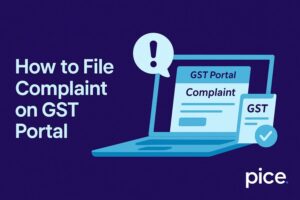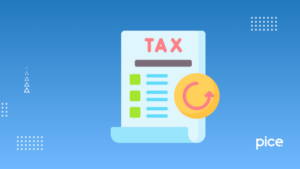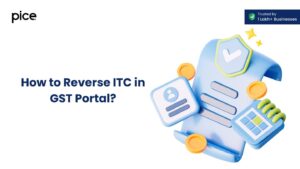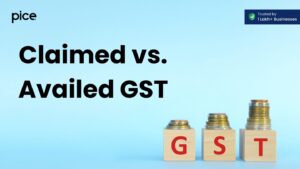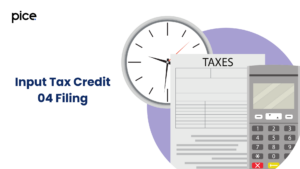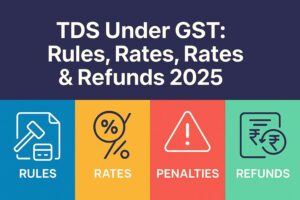Know about GST on Dropshipping Business
- 6 Jan 25
- 13 mins
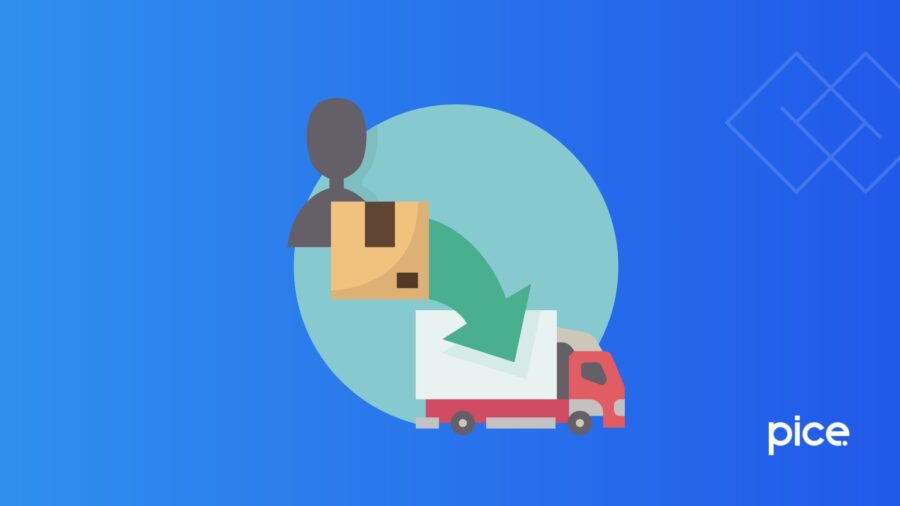
Know about GST on Dropshipping Business
- Is Dropshipping Legal in India?
- Is GST Required for Dropshipping?
- Do I Need a GST Number for Dropshipping?
- Drop Shipping Legal Requirements in India
- Do Drop Shippers Pay Taxes in India?
- Do We Need GST to Sell Online?
- Can I Use One GST Number for Multiple Businesses?
- How to Pay Taxes on Dropshipping?
- Conclusion
Key Takeaways
- Dropshipping is legal in India if all legal and tax obligations are met.
- GST registration is mandatory for dropshipping businesses exceeding turnover thresholds.
- Intrastate and interstate sales attract CGST, SGST, or IGST, depending on the transaction type.
- GST compliance boosts credibility, allows ITC claims, and supports e-commerce sales.
- GST registration and return filing are straightforward processes via the GST portal.
The dropshipping business model has become an increasingly popular business model in India. With its low startup costs and minimal inventory requirements, entrepreneurs are opting for eCommerce. However, dropshipping business involves legal and tax obligations, including Goods and Services Tax (GST) compliance.
In this blog, we will discuss the key legal requirements for dropshipping in India, GST on dropshipping business and other important aspects associated with it.
Is Dropshipping Legal in India?
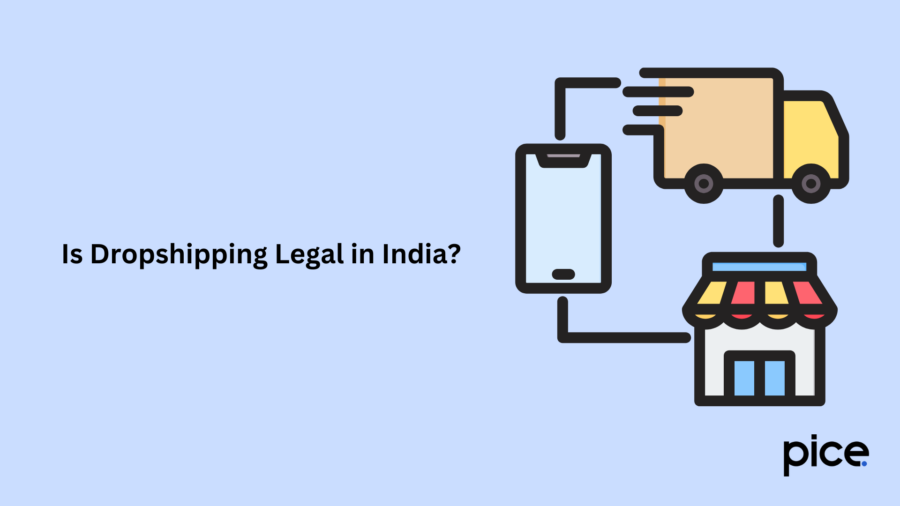
Dropshipping is legal in India. To date, there does not exist a specific law that stops drop-shipping businesses from being operated in India. Considering that you adhere to all the legal requirements, it is legal to sell products online.
However, some dropship products are prohibited or illegal to sell in India. These products include chemicals, harmful objects, drugs, etc.
Some dropshipping businesses operating in India are Myntra, Amazon, and Flipkart. These businesses have been operating for a long time in the country and have become popular among citizens as well.
Is GST Required for Dropshipping?
Goods and Services Tax compliance is a requirement for dropshipping businesses in India. As per regulation, every business entity that is a supplier of goods or services and has a turnover exceeding ₹40 lakh and ₹20 lakh respectively, needs to have a GST registration.
If you fail to register for Goods and Services Tax, you may have to incur hefty penalties and face legal consequences in the future. Therefore, it is important that if you are a dropshipper, you need to maintain compliance with the requirements of GST registration to prevent incurring penalties or facing legal consequences.
Do I Need a GST Number for Dropshipping?
If you sell goods or are looking to sell goods in India, you will mandatorily need a Goods and Services Tax registration. It is applicable to the supply of services and goods across India. Any individual who supplies goods or services needs to be registered under GST.
It is not difficult to obtain a GST registration. You can do it by following a few simple steps in the GST portal.
Drop Shipping Legal Requirements in India
From manufacturing to final consumption, the new tax reform is applicable at all stages of the supply chain. The tax credit that you have paid at earlier locations is available as an Input Tax Credit (ITC).
The burden of tax of sellers who are required to pay tax for the value addition or profit is reduced significantly.
Various types of products fall under different GST slabs. The tax rates and HSN codes are different and depend on the product that you sell online. You must refer to the tax rates and HSN codes before you proceed to sell your product online.
There are broadly three categories of GST: CGST (Central Goods and Services Tax), SGST (State Goods and Services Tax) and IGST (Integrated Goods and Services Tax). If you are a registered or unregistered business in the same state, CGST and SGST will be applicable to your supply. If your business is registered or unregistered in a different state, IGST will be applicable to your supply.
Need of GST for Businesses
To get a GST certificate, you need to only form a company and fulfil the minimum documentation criteria. There are trial periods or exemptions that you need to try out before you enrol yourself in the structure of Goods and Services Tax. The limit was ₹20 lakh before. From 2019-2020, the limit increased to ₹40 lakh. It is important to remember that if the revenue for your business is less than the given limit, it is not required for you to file GST.
You can set a 1-3 month trial period, create a company and obtain a GST certificate. Once you obtain the same, you need to file monthly GST returns unless you enrol yourself under the composition scheme or as a composite taxpayer. Under the composition scheme, you can pay 1% of the total turnover, provided your total turnover is below ₹1.5 crore. It is advisable to register your business under the regular Goods and Services Tax and file GST returns on the due date.
Need of GST for eCommerce Sellers
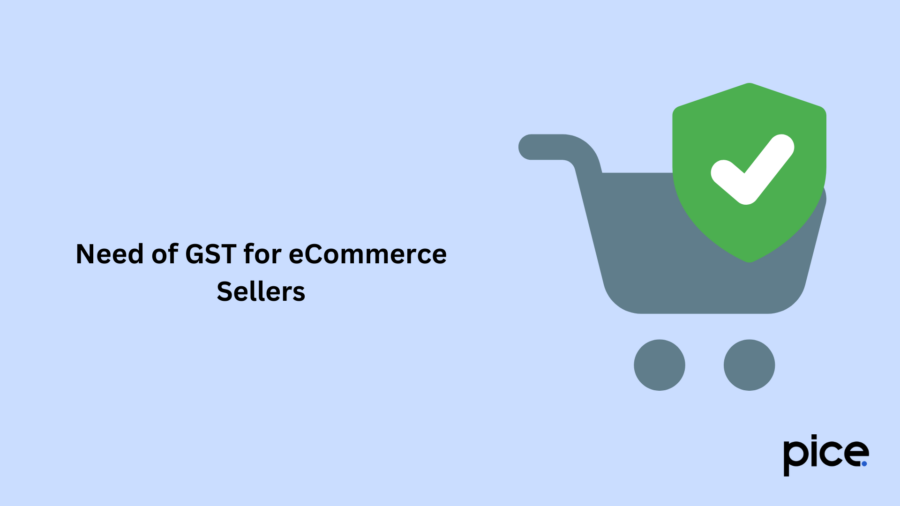
If you are an e-commerce seller, registering under Goods and Services Tax (GST) is crucial. It helps in maintaining compliance with the GST laws, avoiding legal consequences and as a result, helps in building trust and credibility. Some of the benefits of paying GST for e-commerce sellers are:
1. Optimise ITC (Input Tax Credit): You are eligible to claim ITC for your tax payment on expenses and purchases related to your business. This can significantly help you increase your profit margin and reduce tax liability.
2. Legal Adherence: Registering under GST ensures legal compliance of your e-commerce business with the GST laws of India.
3. Compliance Rating: GST compliance rating is referred to as a public rating which can be seen on the GST portal. The higher the compliance rating, the more credible will your business be to the customers. Furthermore, it will also help you build and gain the trust of your suppliers and customers easily.
4. Increase in Credibility: Registration under Goods and Services Tax is an addition to your credibility in the market. GST registration makes your business more reliable to consumers and helps you to gain authority over unregistered businesses. Moreover, customers trust businesses with GST registration more.
5. Business Expansion: Goods and Services Tax or GST registration can help in business expansion by promoting sales on e-commerce marketplaces such as Etsy, Flipkart, Amazon and Meesho.
Hence, GST registration can prove to be beneficial in a number of ways. Like, reduction in tax liability, increase in credibility and enabling access to a wider base of customer and suppliers market.
Do Drop Shippers Pay Taxes in India?
Drop shippers need to pay taxes in India. The taxes that apply to dropshippers and dropshipping businesses in India are income taxes, GST and other applicable taxes as per the existing laws in India.
GST: Goods and Services Tax is applicable to all businesses operating in India. The threshold limit for application of GST is ₹20 lakh. The tax rate is between the range of 0% and 28%.
Corporate Tax: Corporate tax is applicable to all companies situated in India. The threshold limit in this case is on the basis of income. The rate of applicable corporate tax is 25%.
Income Tax: Income Tax is applicable to all earning individuals in India. The threshold limit for the applicability of income is ₹2.5 lakh. The rate of applicable income tax is between the range of 0% and 30%.
Do We Need GST to Sell Online?
GST is mandatory for being able to sell online. Businesses with an annual turnover exceeding ₹40 lakh for goods or ₹20 lakh for services must register under the Goods and Services Tax regime. This is crucial to avoid paying heavy penalties and facing unnecessary legal issues. Therefore, it is crucial for every business owner to maintain compliance with GST registration requirements.
However, it is important to remember that registering under GST is not mandatory if the turnover of your business is less than ₹20 lakh. Essential goods and services like bread, milk and medicines have GST exemptions.
Can I Use One GST Number for Multiple Businesses?
You can use a single Goods and Services Tax (GST) number for multiple businesses. However, their locations need to be in the same state and their Permanent Account Numbers need to be the same as well.
It is important to remember that each business entity needs to register under GST separately and file their own returns, even if their GST number is the same. Furthermore, businesses need to maintain separate records for their purchase and sales transactions to maintain compliance with Goods and Services Tax regulations.
How to Pay Taxes on Dropshipping?
Dropshippers collect and remit sales tax on orders that are shipped to customers in states with a sales tax nexus. It is therefore important to conduct thorough research and understand the tax laws in states where your customers reside.
Apart from maintaining legal compliance, keeping accurate records of taxes collected and sales transactions makes the tax filing process easier. You can also seek guidance from a tax professional to help you out with the tax filing process. An expert can also ensure that you maintain compliance with all the necessary tax laws.
How to Register GST for Online Selling?
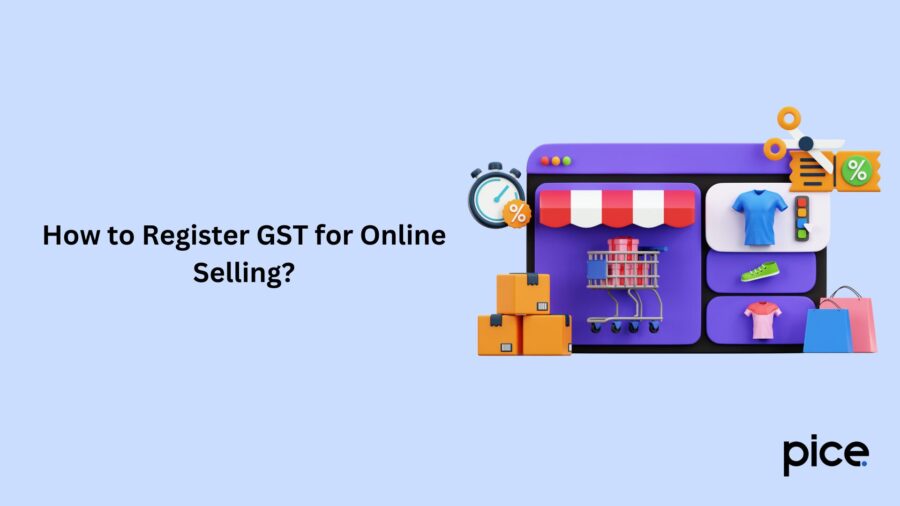
Follow the step-by-step process to register under Goods and Services Tax for online selling:
Step 1: Visit the official portal of GST.
Step 2: You will get access to a new registration form. Select the taxpayer and provide necessary details like the location of your business, Permanent Account Number (PAN), legal name of your business, mobile number and email ID. Enter the given CAPTCHA, and tap on 'Proceed' to continue with the registration process.
Step 3: An OTP (One Time Password) will be sent to your registered email address and mobile number. Verify it and tap on 'Proceed' to complete Part A of the GST registration process.
Step 4: After this, your Temporary Reference Number (TRN) will be generated from their end. Tap on 'Proceed' again.
Step 5: Enter the generated TRN and tap on 'Proceed'.
Step 6: Verify the OTP one more time.
Step 7: You will be able to view your saved application. This will also expire within 15 days. Then, tap on 'Action'.
Step 8: Complete your profile on the GST portal and provide all the necessary fields. You will essentially need to fill in 10 fields – authorised signatory, business details, promoter, authorised representative, principal place of business, goods and services supplied, Aadhaar authentication, Aadhaar verification, state-specific information and additional place of business.
Step 9: Upon filling in all the details, select the authorised signatory name from the dropdown list of 'Name of Authorised Signatory'.
Step 10: Enter the name of the place from where you filed your form like Mumbai, Kolkata, etc. in the 'Place' field.
Step 11: You need to sign the document using a digital signature like a Digital Signature Certificate (DSC) or sign it using your e-verification code (EVC) where you will receive your OTP in your registered mobile number or e-sign it where you will receive an OTP to your Aadhaar-registered phone number.
Step 12: Upon successful completion, the screen will display a successful message.
Step 13: You will receive a successful application acknowledgement with the Application Reference Number (ARN) on your mobile number and email address.
Step 14: You can then track your application status on the GST portal under the section 'Track Application Status'.
Step 15: It takes approximately 6 days for the 15-digit GSTIN (Goods and Services Taxpayer Identification Number) and GST registration certificate in Form GST REG-06 to be assigned.
Before you begin the GST registration process, it is important to have some documents like an Aadhaar card, PAN card and bank details handy.
Filing GST Returns for Dropshipping Business
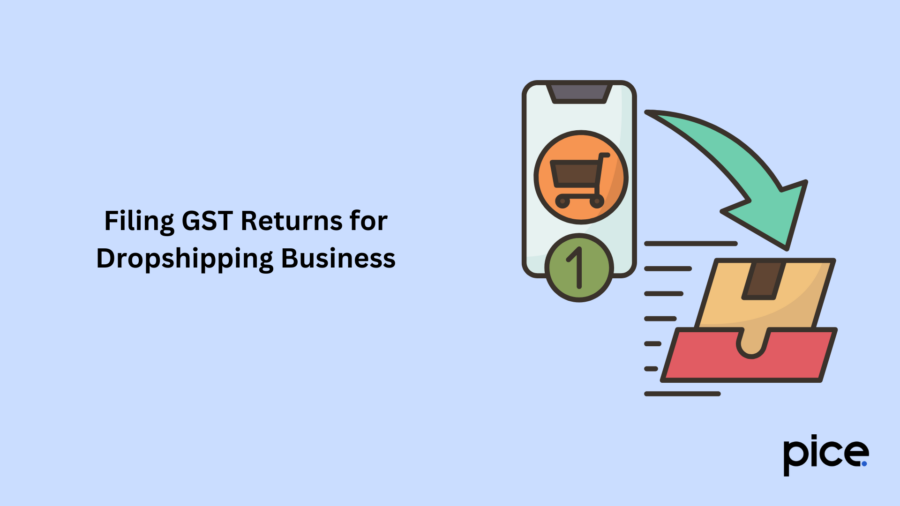
For filing GST returns, you need purchase bills, sales invoices, tax charged on purchase invoices and sales invoices. Additionally, you are required to file one annual return and two monthly returns.
The manual entry is done on the first GSTR-1 filing process before the 11th of every month. Form GSTR-3B will get the details from the filing of GSTR-1, which needs to be filed before the 20th of every month.
If you are the service provider and someone makes a purchase from you, you need to send a sales invoice to the recipient of the service. All input credits from purchases and sales are declared in GSTR 3B.
Difference Between CGST, SGST and IGST Taxes on Dropshipping
The three components of GST are CGST (Central Goods and Services Tax), SGST (State Goods and Services Tax) and IGST (Integrated Goods and Services Tax).
CGST is collected by the central government and is applicable to intrastate sales transactions. For example, a supply between Maharashtra and Maharashtra.
SGST is collected by the state government and is also applicable to intrastate sales transactions. For example, during a supply between Maharashtra and Maharashtra, both CGST and SGST will be applicable.
IGST is collected by the central government on interstate sales transactions. For example, a transaction between Maharashtra and West Bengal. The applicable rate depends on the HSN codes of the goods.
GST Structure on Selling Clothes in India
Clothes priced above ₹1,000 attract 12% GST, while those up to ₹1,000 are taxed at 5%. In addition to this, textile items like synthetic yarn, woven fabrics, pile fabrics, accessories like tapestries or tablecloths and rugs attract GST at the rate of 12%.
Conclusion
GST on dropshipping business offers multiple benefits to entrepreneurs. However, it also requires maintaining adherence to legal and tax obligations. With proper planning and compliance with GST regulations, low startup costs, and reduced risk, dropshipping can be a highly profitable venture in India.
💡If you want to streamline your payment and make GST payments, consider using the PICE App. Explore the PICE App today and take your business to new heights.
 By
By 






